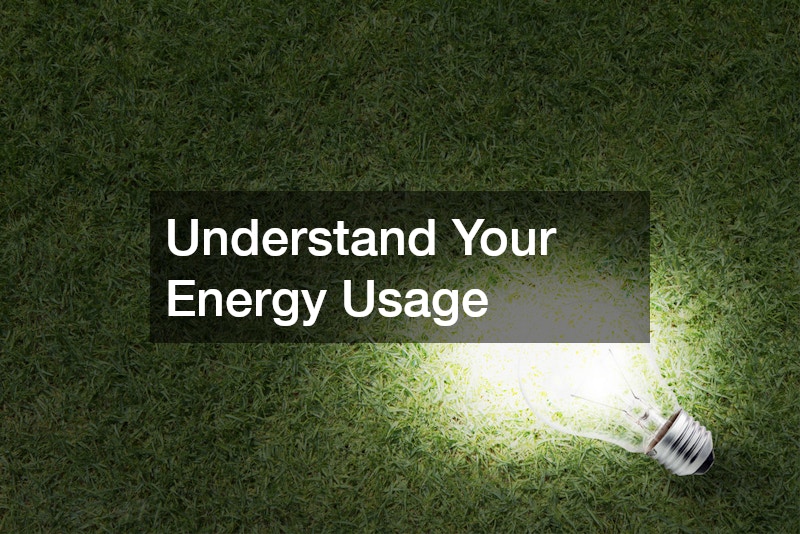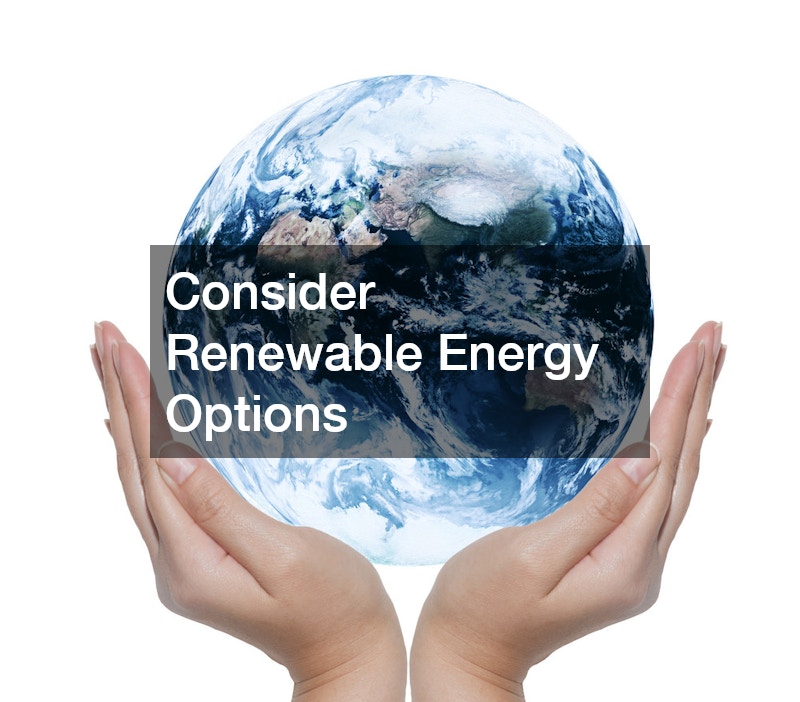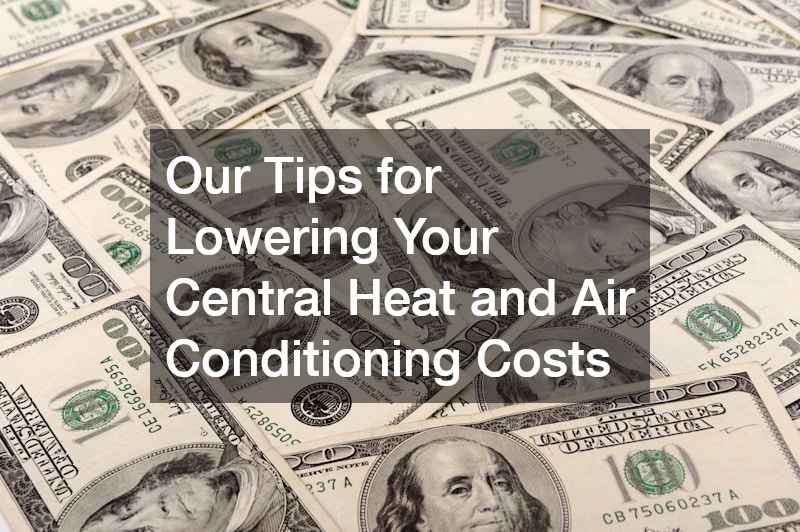Our Tips for Lowering Your Central Heat and Air Conditioning Costs
Central heat and air conditioning systems are essential for maintaining a comfortable indoor environment, but they can also be a major source of energy consumption in homes. In this article, we will explore various strategies to optimize the energy efficiency of central HVAC systems, ranging from simple adjustments to more significant upgrades. By implementing these tips, homeowners can not only reduce their energy bills but also minimize their environmental impact.
Understand Your Energy Usage

When it comes to optimizing central heat and air conditioning systems for energy efficiency, it is crucial to first understand how your home uses energy. HVAC service professionals can help homeowners assess their energy usage patterns and identify areas where improvements can be made. By gaining insights into your energy consumption habits, you can make informed decisions about how to reduce waste and increase efficiency.
Additionally, investing in energy monitoring devices can provide real-time data on your energy usage, allowing you to track trends and adjust your habits accordingly. By staying informed about your energy consumption, you can take proactive steps to optimize your central HVAC system for efficiency.
Heat and air conditioning systems account for a significant portion of a home’s energy consumption, so understanding how they operate is essential to improving efficiency. By working closely with HVAC professionals and utilizing energy monitoring tools, homeowners can gain valuable insights into their energy usage patterns.
Invest in a Programmable Thermostat
One of the most effective ways to optimize central heat and air conditioning systems is by investing in a programmable thermostat. These devices allow homeowners to set specific temperatures for different times of the day, ensuring that the HVAC system operates only when needed. By adjusting the temperature settings to coincide with your daily routine, you can reduce energy waste and save money on your utility bills.
In addition to programmable thermostats, there are also smart thermostats available that can be controlled remotely via a smartphone app. These devices offer added convenience and flexibility in managing your home’s temperature settings, further enhancing energy efficiency. By upgrading to a programmable or smart thermostat, homeowners can take a proactive step towards optimizing their central HVAC system for efficiency.
HVAC supplies such as programmable thermostats are relatively easy to install and can have a significant impact on energy savings. By utilizing these devices to regulate indoor temperatures more effectively, homeowners can reduce their reliance on heat and air conditioning systems.
Regular HVAC Maintenance
Another crucial aspect of optimizing central heat and air conditioning systems for energy efficiency is ensuring regular maintenance. HVAC systems that are dirty or in disrepair are less efficient and consume more energy than well-maintained systems. By scheduling annual HVAC service appointments, homeowners can keep their systems running smoothly and identify any issues before they escalate.
During routine maintenance visits, HVAC professionals will inspect the system, clean components, and make any necessary repairs or adjustments. By keeping your central HVAC system in top condition, you can maximize its efficiency and prolong its lifespan. Regular maintenance not only improves energy efficiency but also prevents costly breakdowns and extends the life of your HVAC equipment.
Heat and air conditioning systems that are properly maintained operate more efficiently, reducing energy consumption and lowering utility costs. By investing in regular HVAC maintenance, homeowners can ensure that their systems operate at peak performance while minimizing energy waste.
Seal and Insulate Ductwork

One often overlooked aspect of central heat and air conditioning systems is the ductwork that distributes conditioned air throughout the home. Leaky or uninsulated ducts can lead to energy loss and reduced efficiency, as heated or cooled air can escape before reaching its intended destination. By sealing and insulating ductwork, homeowners can prevent energy waste and improve the overall performance of their HVAC system.
HVAC professionals can conduct a ductwork inspection to identify any leaks or areas in need of insulation. By sealing duct joints with tape or mastic and adding insulation to exposed ductwork, homeowners can ensure that conditioned air reaches its destination efficiently. Properly sealed and insulated ductwork can significantly reduce energy waste and enhance the performance of central HVAC systems.
HVAC equipment, including ductwork, plays a critical role in the efficiency of heat and air conditioning systems. By addressing leaks and adding insulation to ductwork, homeowners can optimize the performance of their HVAC systems and reduce energy consumption.
Upgrade to Energy-Efficient Systems
For homeowners looking to maximize energy efficiency, upgrading to energy-efficient central heat and air conditioning systems is an effective solution. Energy-efficient systems are designed to consume less energy while providing the same level of comfort as traditional systems. By replacing outdated HVAC equipment with energy-efficient models, homeowners can reduce their energy bills and lessen their environmental impact.
When selecting an energy-efficient HVAC system, homeowners should look for units with a high Seasonal Energy Efficiency Ratio (SEER) rating. SEER measures the efficiency of air conditioners and heat pumps, with higher ratings indicating better energy performance. By choosing a system with a high SEER rating, homeowners can enjoy greater energy savings and enhanced comfort in their homes.
Working with an experienced HVAC contractor is essential when upgrading to energy-efficient heat and air conditioning systems. HVAC professionals can assess your home’s needs, recommend suitable systems, and ensure proper HVAC installation, maximizing the efficiency and performance of the new equipment.
Utilize Ceiling Fans
In addition to central heat and air conditioning systems, ceiling fans can be valuable tools for improving energy efficiency in homes. During the warmer months, running ceiling fans can help circulate air and create a breeze, allowing homeowners to raise their thermostat settings without sacrificing comfort. By using ceiling fans in conjunction with central HVAC systems, homeowners can reduce their cooling costs and energy consumption.
During the colder months, ceiling fans can also be beneficial when operated in reverse. Running fans clockwise at a low speed can help redistribute warm air that rises to the ceiling, keeping rooms evenly heated. By utilizing ceiling fans strategically throughout the year, homeowners can optimize the performance of their central HVAC systems and enhance energy efficiency.
HVAC companies often recommend using ceiling fans in conjunction with heating and air conditioning systems to improve airflow and comfort. By running fans efficiently and adjusting their settings seasonally, homeowners can reduce their reliance on HVAC systems and save on energy costs.
Manage Sunlight and Shade

The amount of sunlight that enters a home can have a significant impact on its indoor temperature and energy consumption. By strategically managing sunlight and shade, homeowners can reduce the workload on central heat and air conditioning systems and lower cooling costs. Installing blinds, curtains, or shades on windows can help block out sunlight during the hottest parts of the day, reducing the need for cooling.
Alternatively, during the colder months, allowing sunlight to enter the home can help naturally warm indoor spaces, reducing the demand on heating systems. By adjusting window coverings or landscaping to control sunlight exposure, homeowners can optimize their central HVAC systems for energy efficiency. Managing sunlight and shade effectively can lead to substantial energy savings and improved comfort in the home.
A local HVAC company often advises homeowners to consider the impact of sunlight on their energy usage when optimizing central heating and air conditioning systems. By taking steps to manage sunlight and shade, homeowners can reduce their reliance on HVAC systems and enhance energy efficiency throughout the year.
Optimize Home Insulation
Proper home insulation is crucial for maintaining a comfortable indoor environment and maximizing the efficiency of central heat and air conditioning systems. Well-insulated homes are better equipped to retain conditioned air, reducing the workload on HVAC systems and lowering energy consumption. By evaluating and improving insulation levels in key areas such as walls, floors, and attics, homeowners can enhance energy efficiency and minimize heat loss or gain.
Local HVAC contractors can conduct energy audits to identify areas in homes that require additional insulation or sealing. By addressing these insulation gaps, homeowners can create a more comfortable and energy-efficient living space. Investing in optimal home insulation not only improves the performance of central HVAC systems but also contributes to overall energy savings.
Heat and air conditioning systems work more efficiently in well-insulated homes, as conditioned air is better contained and circulated. By optimizing home insulation levels, homeowners can reduce energy waste, enhance indoor comfort, and lower their utility bills.
Use Natural Ventilation
For homeowners looking to reduce their reliance on heat and air conditioning systems, natural ventilation can be an effective strategy. Opening windows and doors strategically to allow for cross ventilation can help exchange indoor air with fresher outdoor air, improving air quality and reducing the need for mechanical cooling. By harnessing natural ventilation, homeowners can create a more comfortable indoor environment while minimizing energy consumption.
In addition to promoting air circulation, natural ventilation can also help reduce moisture buildup in homes, preventing mold growth and improving overall indoor air quality. By incorporating natural ventilation techniques into their daily routines, homeowners can lower their energy bills and enhance the performance of central HVAC systems. Utilizing natural ventilation is a simple and cost-effective way to optimize energy efficiency in homes.
Plumbing companies often recommend natural ventilation as a complementary strategy to central heat and air conditioning systems. By leveraging natural airflow and ventilation, homeowners can reduce their reliance on HVAC systems and create a healthier indoor environment for their families.
Limit Appliance Use During Peak Hours
Energy consumption in homes can spike during peak hours, putting added strain on central heating and air conditioning systems. To reduce energy waste and maximize efficiency, homeowners can limit the use of energy-intensive appliances during peak demand times. Running dishwashers, washing machines, and dryers during off-peak hours can help alleviate the load on HVAC systems and lower energy costs.
By scheduling the operation of appliances strategically, homeowners can avoid overlapping peak demand periods and optimize their energy usage. Additionally, investing in energy-efficient appliances can further reduce energy consumption and lessen the burden on central HVAC systems. Managing appliance use during peak hours is a simple yet effective way to enhance home energy efficiency.
Plumbing services often recommend that homeowners stagger the use of energy-intensive appliances to avoid overwhelming central heat and air conditioning systems. By being mindful of peak demand times and adjusting appliance schedules accordingly, homeowners can lower their energy bills and improve the overall efficiency of their homes.
Consider Renewable Energy Options

For homeowners seeking to reduce their carbon footprint and energy costs, considering renewable energy options is a viable solution. Solar panels, wind turbines, and geothermal systems are renewable energy sources that can offset the energy consumption of central heating and air conditioning systems. By harnessing renewable energy, homeowners can reduce their reliance on fossil fuels and contribute to a more sustainable and eco-friendly future.
When evaluating renewable energy options, homeowners should consult with HVAC professionals to determine the most suitable systems for their needs. By integrating renewable energy technologies with central HVAC systems, homeowners can achieve greater energy independence and long-term savings. Investing in renewable energy not only benefits the environment but also enhances the efficiency and performance of central heating and air conditioning systems.
Central heating and air conditioning systems can be supplemented with renewable energy sources to reduce energy consumption and lower utility bills. By exploring renewable energy options, homeowners can take proactive steps towards creating a greener and more energy-efficient home. Additionally, these systems can increase property value and appeal, making them a smart investment for the future. Understanding available incentives and rebates can further enhance the financial benefits of transitioning to renewable energy.
Optimizing central heat and air conditioning systems for energy efficiency is essential for reducing energy waste, lowering utility costs, and minimizing environmental impact. By understanding energy usage patterns, investing in programmable thermostats, performing regular maintenance, sealing and insulating ductwork, upgrading to energy-efficient systems, utilizing ceiling fans, managing sunlight and shade, optimizing home insulation, utilizing natural ventilation, limiting appliance use during peak hours, and considering renewable energy options, homeowners can enhance the performance of their central HVAC systems. By implementing these strategies, homeowners can enjoy a more comfortable and eco-friendly living environment while saving money on energy bills.
